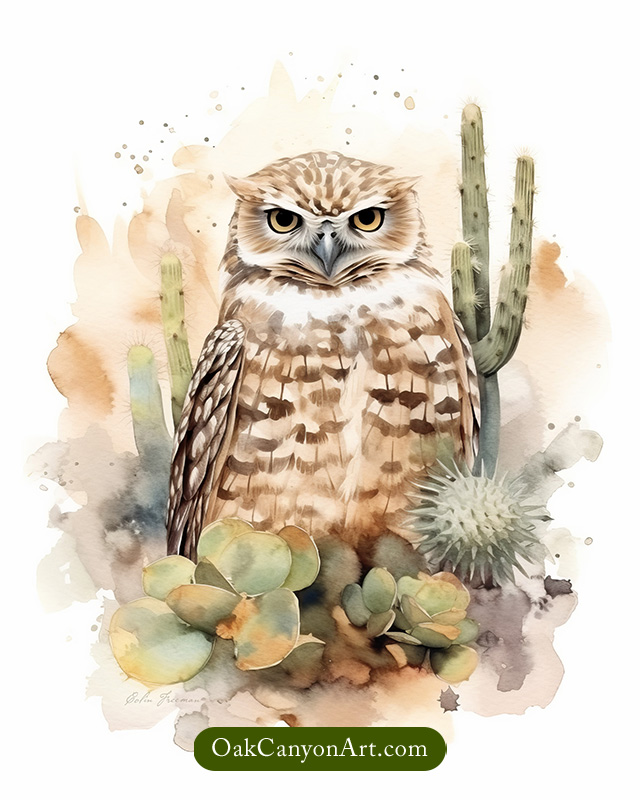Introduction
While most owls are known for their silent wings and nocturnal habits in treetop perches, the burrowing owl flips the script—living underground, hunting during the day, and often strutting around on long legs like a feathered meerkat. These small, quirky raptors are full of surprises and play a vital role in the ecosystems they call home. Let’s dig into what makes the burrowing owl so unique and why it deserves both admiration and protection.
Species Overview
Burrowing owls (Athene cunicularia) are small, ground-dwelling raptors that stand about 9–11 inches tall with wingspans reaching up to 24 inches. Characterized by their bright yellow eyes, white “eyebrows,” and long, skinny legs, these owls are just as recognizable on the ground as they are in flight. Unlike their more reclusive owl cousins, burrowing owls are often active during the day (especially early morning and late afternoon), making them more visible to birdwatchers and biologists alike.
Habitats
True to their name, burrowing owls live in burrows—though they rarely dig these themselves. Instead, they rely on abandoned burrows from prairie dogs, ground squirrels, armadillos, or tortoises. These underground homes provide shelter from predators and harsh weather, as well as safe nesting grounds. Burrowing owls prefer open landscapes like grasslands, deserts, agricultural fields, and even airport grass strips—anywhere flat and open with good sight lines.
Range
Burrowing owls have an expansive range across the Americas. In North America, they can be found throughout the western United States, parts of Florida, and much of Mexico. In South America, they range as far south as Argentina. Populations in the northern parts of their range are migratory, while many southern populations remain in their territories year-round. Their adaptability to various environments has helped them persist in both wild and semi-urban settings, though not without challenges.
Social Nature
Unlike most owls, burrowing owls are notably social. It’s not uncommon to see several of them perched outside their burrows, especially during breeding season. They communicate with a variety of sounds including coos, chattering, and even mimicry of rattlesnake hissing to ward off predators. These owls also engage in sunbathing, stretching out their wings and legs to soak in warmth—a behavior rarely observed in other raptor species.
Feeding Habits
Burrowing owls are opportunistic feeders, consuming a diet that varies with their location and season. Insects such as beetles, grasshoppers, and crickets are common prey, especially during summer months. They also hunt small mammals, reptiles, amphibians, and even birds. Their long legs give them a surprising turn of speed when chasing prey on the ground, and they often hunt from a low perch or on foot rather than from the air.
Migratory Patterns
Northern populations of burrowing owls, such as those in Canada and the northern U.S., typically migrate southward for winter, traveling to areas in Mexico and Central America. However, their migratory patterns are still not fully understood and vary between populations. In contrast, populations in warmer climates—like Florida, Arizona, and parts of South America—tend to remain year-round residents. Migration timing can be influenced by food availability, habitat changes, and climate conditions.
Conservation Efforts
Despite their adaptability, burrowing owls face numerous threats. Habitat destruction from urban development and agricultural expansion has led to significant population declines in many areas. The widespread extermination of prairie dogs and other burrowing mammals also reduces the availability of suitable nesting sites.
Conservation initiatives focus on preserving open landscapes, protecting burrowing mammals, and even installing artificial burrows to help offset the loss of natural ones. Organizations and government agencies have also launched education campaigns to raise awareness and promote coexistence, especially in urban areas where owls are increasingly making their homes.
In some states and provinces, burrowing owls are listed as threatened or endangered, and research efforts continue to better understand their migratory habits and breeding success.
Conclusion
The burrowing owl may be small, but it plays a big role in the ecosystems it inhabits. From controlling insect populations to maintaining healthy prairie ecosystems, this charismatic bird reminds us that not all owls dwell in darkness. As human development continues to reshape natural landscapes, it’s up to us to ensure that these fascinating ground-dwellers have the space—and burrows—they need to thrive. With the right efforts, the future for burrowing owls doesn’t have to be underground.
